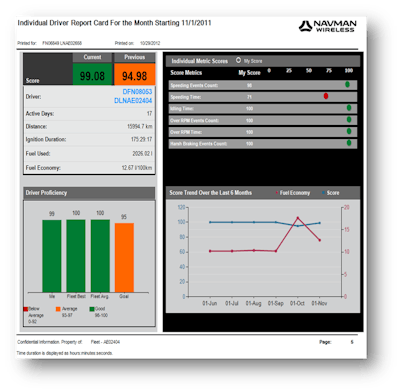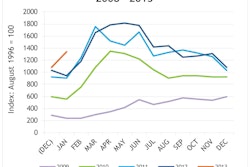
The driver performance features include four new reports and two new dashboard KPIs. Users can quickly pinpoint trouble spots and drilldown to a specific driver directly from the system’s Dynamic Dashboard, the company says.
The latest OnlineAVL2 upgrade also has new reports that allow managers to view fleet performance by both driver groups and vehicle types.
OnlineAVL2’s new Driver Scorecards measure behaviors such as speeding, idling, harsh braking, high RPMs or other integrated user-defined driving habits, utilizing metrics gathered from Navman Wireless GPS tracking units installed in a given fleet.
If sensors that detect seatbelt use, emergency brake deployment or other driver activities are connected to the system’s GPS tracking units, the Driver Scorecards can incorporate that information as well. The resulting data is then available for at-a-glance examination with:
Scorecard reports that instantly identify drivers with below-average performance, show the impact of their behavior on fuel consumption, and permit drilldown to trip details when needed.
Individual driver report cards that include personal scores as well as comparison of drivers against fleet averages.
Configurable dashboard KPIs to choose the drivers and time period represented as well as drill down for details. The KPIs allow real-time monitoring of problem drivers for intervention with urgent problems like speeding and excessive idling.
New Driver Groups support in OnlineAVL2 also allows fleet managers to classify their drivers by region, business unit, service type or any other category of their choice, and then generate any Driver Scorecard report or driver-based dashboard KPI by driver group. This enables managers to compare performance by driver group and use that information to improve driver behavior in groups that lag behind those with the top scores, the company says.











